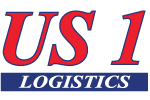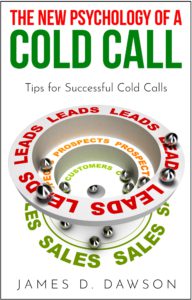The right shipper is one click away—if you know how to make the connection count.
LinkedIn is a goldmine for freight brokers—but only if you know how to dig the right way. It’s not just a digital resume hub anymore; it’s where shippers, logistics managers, and decision-makers go to research, vet, and connect with potential partners. But here’s the catch: you only get one shot to make a first impression.
Mass messages? Deleted.
Pushy pitches? Blocked.
Copy-paste intros that scream “template”? Ghosted.
The truth is, people buy from people they trust, not profiles that flood their inbox with spam. So if you’re approaching LinkedIn like a cold-calling machine, you’re not just wasting time—you’re burning bridges before they even form.
That’s why mastering the platform is crucial, especially if you’re a freight broker agent, an independent freight agent, or breaking into the industry with a new freight agent job. The goal isn’t just to connect—it’s to start meaningful conversations that lead to long-term relationships.
This guide will show you exactly how to do that. We’ll cover how to build a profile that gets noticed, how to find the right shippers, and how to engage without being pushy or robotic. It’s about authenticity, relevance, and positioning yourself as a problem solver—not just another pitch in a sea of noise.
🚛 1. Start With a Clean Profile (That Speaks Their Language)
Hook: First impressions matter—and on LinkedIn, your profile is your handshake.
Your headline should clearly say what you do and how you help—not just your job title. Instead of “Freight Broker Agent,” say “Helping Food Distributors Ship Faster with Reliable Dry Van Coverage.” Shippers care about outcomes, not acronyms.
🛠 Tip: Use industry keywords like “truck freight broker,” “freight agent broker,” and “freight broker freight agent” in your summary to boost search visibility.
🔍 2. Use Search Filters Like a Pro
Hook: The search bar is your gateway to shippers—but filters are your secret weapon.
Use LinkedIn’s advanced filters to search for roles like “Logistics Manager,” “Shipping Coordinator,” or “Procurement Director.” Then narrow by location, company size, or industry (e.g., food production, retail, manufacturing).
🛠 Tip: Use Boolean searches: try ("shipping manager" OR "logistics coordinator") AND ("Atlanta" OR "Chicago").
🤝 3. Connect With a Reason, Not a Pitch
Hook: People don’t connect with strangers—they connect with relevance.
When you hit “Connect,” always include a short message that shows you’re human and informed.
🛠 Bad: “Hey, I’m a freight broker looking for business—connect?”
🛠 Better: “Hi Jordan, I see you’re handling logistics at [Company]. I specialize in [industry] freight and always enjoy connecting with supply chain folks. No pitch—just professional networking.”
🎯 Why it works: It feels personal, not pushy.
📢 4. Post Smart, Not Salesy
Hook: Don’t wait for shippers to come to you—give them a reason to notice you.
Regular posting builds credibility. Share case studies, shipping trends, lane updates, or quick tips. Highlight what you’ve solved, not just what you offer.
🛠 Post Idea: “Moved a rush load from Dallas to Birmingham in 14 hours flat after a last-minute cancellation. Always proud to keep freight moving under pressure.”
📌 Keywords to mix in: “independent freight broker agent,” “freight agent job,” “freight agent opportunities.”
💬 5. Engage With Their Content (Without Being Weird)
Hook: You can be on their radar before you even send a message.
Like, comment, and share their posts with a genuine perspective. Tag them when relevant, and offer value—not empty compliments.
🛠 Comment Example:
“Smart point about warehouse bottlenecks—our team’s seen the same on the East Coast lanes this month.”
📈 6. Build a Network, Not a List
Hook: Don’t collect contacts. Build conversations.
Instead of jumping into “Do you have freight?” right after connecting, aim to build rapport. Ask thoughtful questions, offer helpful insights, or invite them to a quick chat—not a quote request.
🛠 Message Prompt:
“Out of curiosity—what’s your team’s biggest shipping headache right now? Always looking to learn from folks in the trenches.”
💡 Bonus: This builds trust and positions you as a resource, not a vendor.
🚀 Final Takeaway
If you’re a freight broker agent or independent freight agent trying to grow your book of business, LinkedIn isn’t just another social platform—it’s your digital sales floor. But unlike cold calls, this one doesn’t hang up on you. Instead, it rewards consistency, authenticity, and the ability to start real conversations.
Here’s the golden rule: don’t treat LinkedIn like a pitch deck—treat it like a coffee chat. People aren’t logging in to get sold. They’re logging in to learn, connect, and explore new solutions. If you show up with the mindset of adding value, not extracting business, your engagement—and your results—will skyrocket.
Start by crafting a profile that makes your value clear: what problems you solve, who you serve, and how you help. Then, use smart search strategies to find the right shippers and engage with them naturally. Comment on their posts. Send messages that feel human, not scripted. Show them you understand their challenges and care about their outcomes.
When you do this right, something powerful happens: those casual “connections” become real conversations. Those conversations become trust. And that trust? That’s where freight moves.


Recent Comments